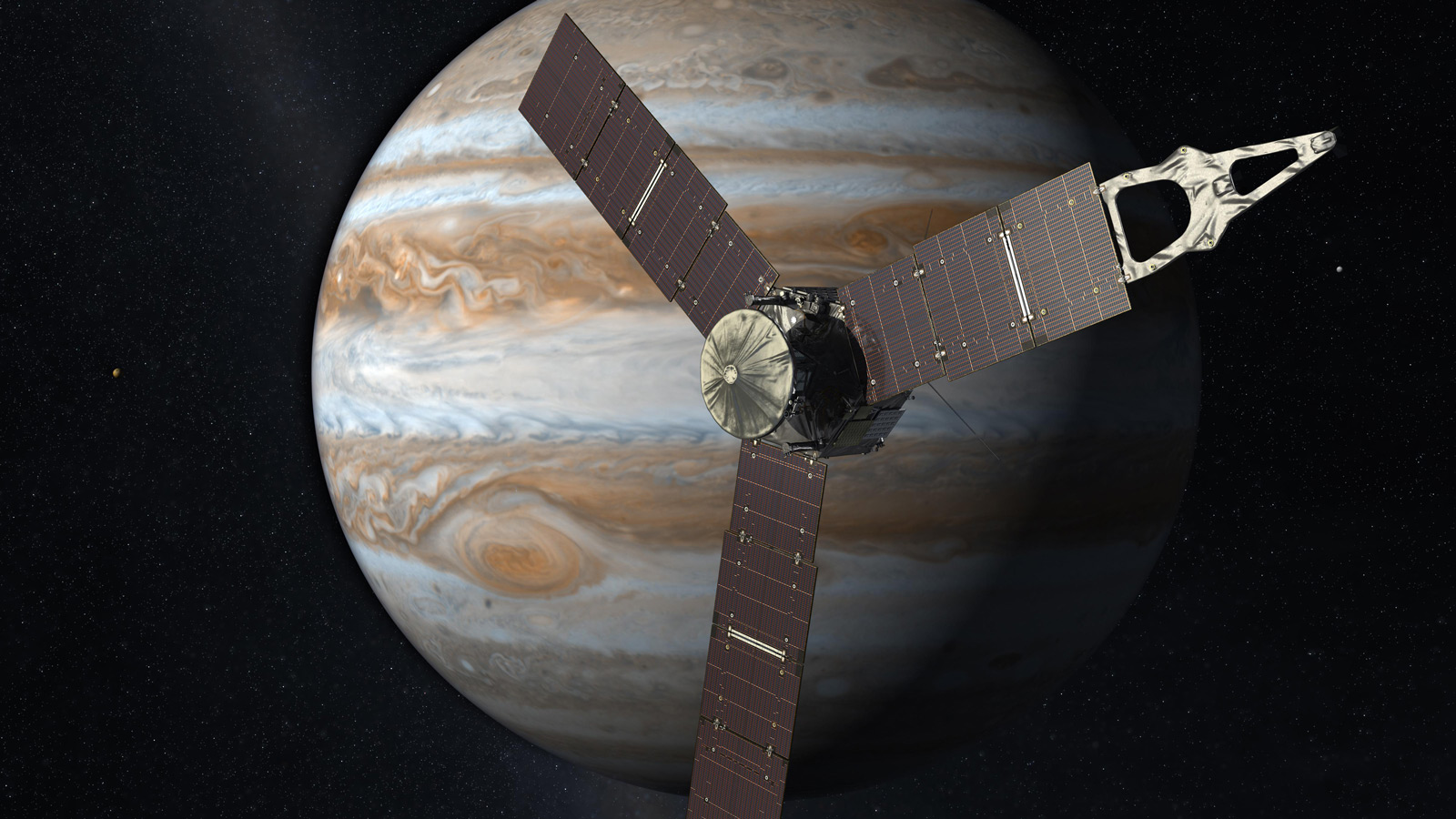NASA spacecraft sets solar-power distance record
On January 13, NASA’s Juno mission to Jupiter broke a new record. Juno was approximately 493 million miles from the sun — making it the most distant solar-powered craft ever.
The previous record-holder was the European Space Agency’s Rosetta spacecraft, which reached about 492-million-miles away in 2012.

“Juno is all about pushing the edge of technology to help us learn about our origins,” said Scott Bolton, Juno principal investigator at the Southwest Research Institute in San Antonio. “We use every known technique to see through Jupiter’s clouds and reveal the secrets Jupiter holds of our solar system’s early history. It just seems right that the sun is helping us learn about the origin of Jupiter and the other planets that orbit it.”
Juno, the first solar-powered spacecraft designed to operate at such a great distance from the sun, was launched five years and is expected to reach Jupiter by July of this year.
The craft has a large surface area covered in solar panels (18,698 individual solar cells, to be exact) in order to generate adequate power during its journey. At Earth distance from the sun, the cells have the potential to generate approximately 14 kilowatts of electricity, but the real challenge remains in transporting those same rectangles of silicon and gallium arsenide to planets further from the sun.
“Jupiter is five times farther from the sun than Earth, and the sunlight that reaches that far out packs 25 times less punch,” said Rick Nybakken, Juno’s project manager from NASA’s Jet Propulsion Laboratory in Pasadena, Calif. “While our massive solar arrays will be generating only 500 watts when we are at Jupiter, Juno is very efficiently designed, and it will be more than enough to get the job done.”
Before Juno, a total of eight spacecraft have navigated as far out as Jupiter, but they all used nuclear power sources to get there. Solar power is possible on Juno due to improved solar-cell performance, energy-efficient instruments and spacecraft, a mission design that can avoid Jupiter’s shadow, and a polar orbit that minimizes the total radiation. Juno’s maximum distance from the sun during its 16-month science mission will be about 517 million miles, marking an almost five percent increase in the record for solar-powered space vehicles.
“It is cool we got the record and that our dedicated team of engineers and scientists can chalk up another first in space exploration,” said Bolton. “But the best is yet to come. We are achieving these records and venturing so far out for a reason — to better understand the biggest world in our solar system and thereby better understand where we came from.”


Comments are closed, but trackbacks and pingbacks are open.